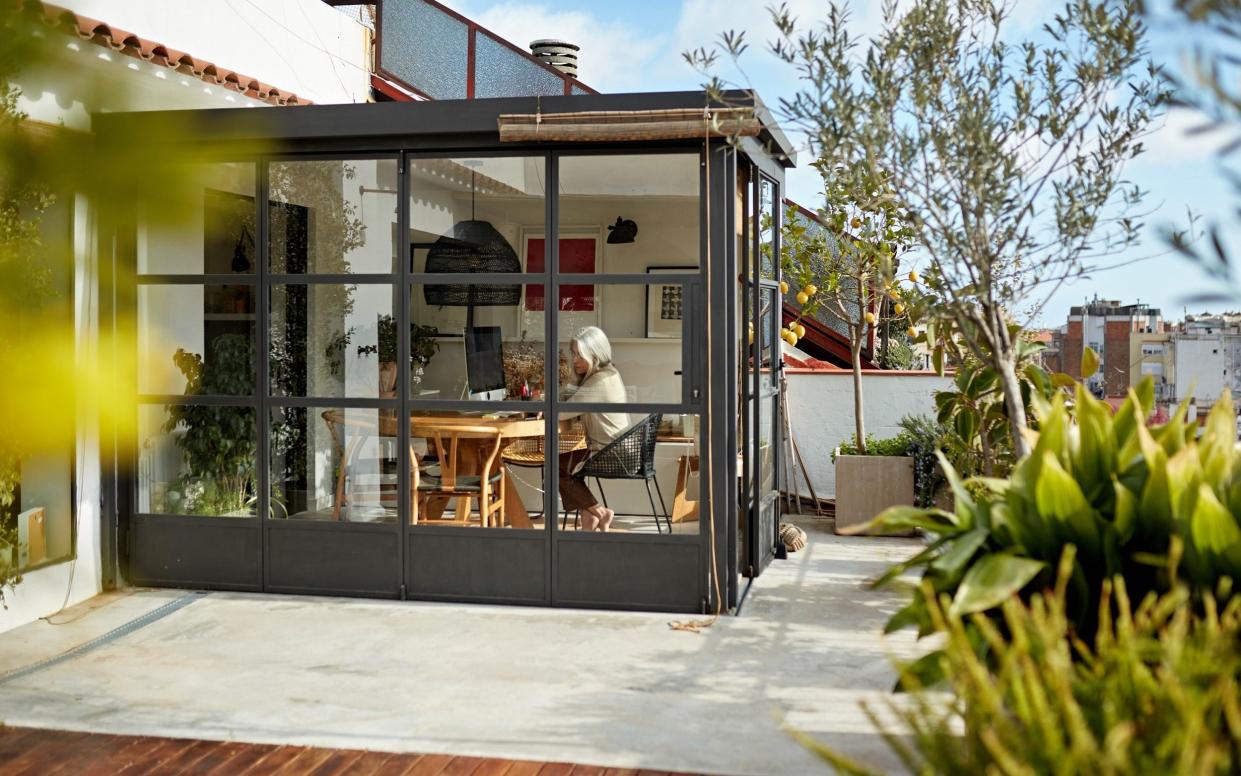Dreaming of a new conservatory? Climate change building rules could shatter that middle-class aspiration

As a middle-class staple coveted even by members of the Royal family, the conservatory has been an object of aspiration for the British homeowner for decades.
But now its days could be numbered under new rules designed to limit windows to keep homes cool as the climate warms.
From June, new properties will face strict limits on window sizing or have to pass complex modelling tests to show that they do not become too hot in the summer.
Watch: What is a 'Climatarian'?
The long-awaited regulations respond to concerns that Britain's housing stock is at risk of becoming "uninhabitable" if 40C summers become commonplace.
It follows calls by environmental groups, including official government advisers the Climate Change Committee, to build houses in a way that makes sure people do not overheat in the summer.
The new rules limit window size to a specific percentage relating to the floor area of a room and house, depending on the direction they face and how at risk the home is from overheating.
For homes that do not meet the rules, bespoke analysis must be carried out, modelling the home's design including shades and ventilation and the likely weather conditions to ensure internal temperatures will not get too hot.
Conservatories can be exempted from the rules if they are unheated and separated from the house with exterior doors and walls - but must be accounted for if they have heating and run on from another room in the house.
Building groups said developers could be put off installing conservatories, especially smaller companies concerned about the added cost of the modelling, which could run to thousands of pounds.
Experts said the rules would also hit trendy floor-to-ceiling windows, particularly in flats where ventilation is more difficult, as well as sliding patio doors.
Rico Wojtulewicz, head of housing and planning policy at the National Federation of Builders, said: "We can build heavily glazed buildings but smaller companies who do a number of different housing types on one development may avoid it, due to the potential cost of the dynamic thermal modelling on each home."
He said conservatories could become a more "premium product" as high-end builders continue to put them in while more lower-priced and mid-market companies ditch them from developments.
Andrew Mitchell, director of energy services at construction consultancy Stroma, said: "Conservatories are a loophole in the regulations as long as you keep the divide. You can keep the conservatory if you have that divide from the home. If you're going to heat it you've run straight into trouble."
He added home designs would become more standardised as builders tried to avoid having to do too much modelling of different layouts.
"We are going to get boring homes across the country because the regulations have got so hard," he said.

The regulations, published last month as part of a wider overhaul of building standards, are set to come into force in June. They affect new-build homes but not extensions.
It came as the Government said that overheating in homes was a "priority risk" as Britain's summers become hotter due to climate change, especially if people continue to work from home after the pandemic.
"As well as risk to life, high temperatures will lead to productivity losses for UK workers," the Government's official Climate Change Risk Assessment warned on Monday.
Last year's guidance from the Climate Change Committee warned: "More than 300,000 homes are due to be built each year across the UK and there is a major risk of lock-in if they are not planned and built to address overheating alongside energy efficiency and low-carbon heating.
"Inaction now will create unnecessary retrofit costs later and could even leave many existing and new homes uninhabitable as temperatures rise."
A spokesman for the Department for Levelling Up, Housing & Communities said: “These new regulations cover only new residential buildings, not extensions.
“It is vital we adapt as we prepare to face the reality of climate change. This includes making sure our new homes are fit for the future by reducing the risk of overheating.”
Watch: What will the world look like in 2030, 2040, 2050?

 Yahoo News
Yahoo News 
